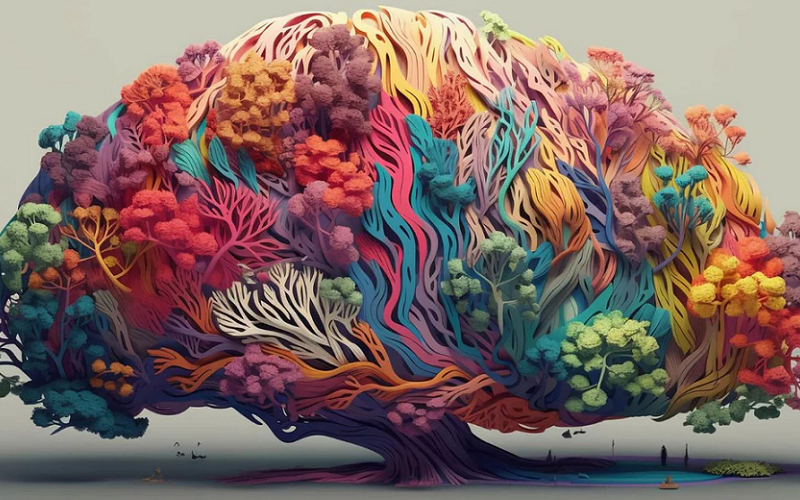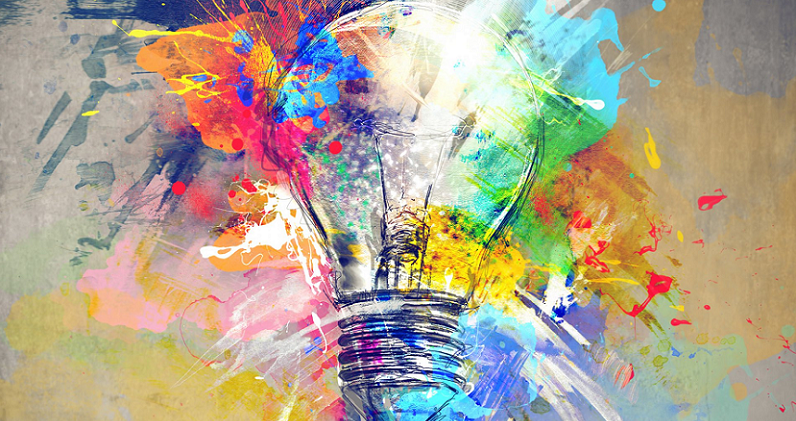
Creativity is not just an innate talent but a complex cognitive process that can be nurtured and enhanced. In today’s fast-paced world, where innovation is at a premium, individuals from artists to entrepreneurs are constantly seeking ways to boost their creative capabilities. Enter nootropics—often referred to as “smart drugs” or cognitive enhancers—substances reputed to improve brain function. These agents are gaining attention not only for their ability to enhance memory and focus but also for their potential to unlock new realms of creativity.
Contents
Introduction to Creativity and Nootropics
Creativity is often hailed as the fuel that drives innovation, transforming mundane ideas into revolutionary breakthroughs. It’s a valuable asset in every discipline, from the arts to engineering. However, not everyone can summon creativity at will, which is where nootropics—cognitive enhancers known to improve mental functions such as memory, focus, and motivation—come into play.
Definition and Importance of Creativity
Creativity is the ability to transcend traditional ideas, rules, patterns, and relationships, and to create meaningful new ideas, forms, methods, and interpretations. It is essential not only in artistic and academic pursuits but also in everyday problem solving. In the context of cognitive health, creativity is not just an advantage; it’s a necessity for adapting to and thriving in the rapidly changing environments of modern life.
Overview of Nootropics and Their Role in Cognitive Enhancement
Nootropics, also known as smart drugs, are substances that can significantly enhance cognitive performance. They work by increasing the efficiency of the brain’s functions, enhancing communication between neurons, providing better resistance to disturbances, or increasing the health of brain cells. These effects can contribute to improved focus, faster reactions, and better memory. Given these benefits, nootropics have garnered interest for their potential to also elevate creative thinking—creating a synergy between enhanced cognitive function and innovative capabilities.
Understanding Creativity
Creativity is not merely a single skill or a sporadic stroke of genius, but rather a multifaceted cognitive process that involves several brain regions and is influenced by both psychological and environmental factors.
The Cognitive Science of Creativity
Creativity involves a symphony of cognitive processes, including the ability to perceive the world in new ways, to find hidden patterns, and to make connections between seemingly unrelated phenomena. It also requires the capacity to generate solutions that are both original and useful.
Brain Regions Involved in Creative Thinking
Creative thinking primarily engages the brain’s default mode network, which is active when you’re engaged in internally focused tasks such as daydreaming, imagining, and reflecting. However, creativity doesn’t just happen in one specific area of the brain; it’s a complex interplay between multiple brain regions, including those responsible for associative thinking, emotional evaluation, and cognitive flexibility [1].
Neurological Processes Underpinning Creativity
Creativity is linked to the brain’s ability to restructure information, allowing individuals to recombine existing knowledge in novel ways. Neuroplasticity, or the brain’s ability to reorganize itself by forming new neural connections, plays a significant role in this process. Neurotransmitters like dopamine are critical, as they influence motivation, reward, and novelty-seeking behaviors—all of which are essential for creative thought.
Psychological and Environmental Factors Influencing Creativity
Beyond the biological basis, creativity is also profoundly influenced by psychological and environmental variables. These factors not only stimulate the onset of creative ideas but also sustain the motivation to develop them further.
Influence of Mood and Environment
Mood profoundly affects creative output. Generally, positive emotions broaden cognitive processes and foster creativity by increasing the brain’s ability to form new connections. Conversely, certain types of stress can either hinder or facilitate creativity depending on the individual’s perception and resilience. Environments that promote psychological safety, diversity, and openness to new experiences enhance creative performance.
Role of Stress and Mental Health
While moderate stress can enhance creativity by providing motivational intensity, chronic stress may impair cognitive function and stifle creative capabilities. Mental health is another critical factor; for example, there is a well-documented association between mood disorders and creative activity in the literature. Understanding these nuances helps frame how nootropics might mitigate negative impacts on creativity, fostering a more conducive mental state for innovation [2].

Overview of Nootropics
Nootropics have gained considerable attention for their potential to enhance various cognitive functions. To understand how these substances might aid in boosting creativity, we first need a thorough understanding of what nootropics are, their classifications, and the mechanisms through which they affect the brain.
Definition and Classification of Nootropics
Nootropics, or cognitive enhancers, are a broad category of drugs, supplements, and other substances that claim to improve cognitive function, particularly executive functions, memory, creativity, or motivation, in healthy individuals.
Synthetic vs. Natural Nootropics
Nootropics can be divided into two main types: synthetic and natural. Synthetic nootropics, like Piracetam, were developed in laboratories and are designed to target specific neurological pathways. Natural nootropics, such as Ginkgo biloba and Panax ginseng, are derived from plants and have been used in traditional medicine for centuries to improve various aspects of cognitive health.
Commonly Used Nootropics in Cognitive Enhancement
Some of the most commonly used nootropics include caffeine, which enhances alertness; L-theanine, found in green tea, which promotes relaxation without drowsiness; and creatine, which supports cognitive processing by increasing energy availability in the brain. Each of these has different mechanisms of action and potential benefits for cognitive enhancement.
Mechanisms of Action
Understanding the mechanisms by which nootropics work is crucial for determining how they might enhance creativity and other cognitive functions.
Enhancement of Neurotransmitter Levels
Many nootropics function by altering the levels of neurotransmitters in the brain. For example, substances like racetams influence acetylcholine production, which can improve memory and learning. Similarly, modafinil increases dopamine levels, enhancing attention and focus.
Improvement of Blood Flow and Oxygen to the Brain
Nootropics such as Ginkgo biloba and Vinpocetine increase blood flow to the brain, thereby improving oxygen and glucose delivery to neurons. This can enhance brain metabolism and overall cognitive functions, potentially leading to enhanced creative thinking [3].
Protection Against Neurological Stress
Some nootropics also provide neuroprotective benefits. They help maintain brain health by combating oxidative stress and reducing inflammation. For instance, Omega-3 fatty acids, known for their anti-inflammatory properties, protect neural integrity and support cognitive functions including creativity.
Nootropics Known to Enhance Creativity
In the realm of cognitive enhancement, certain nootropics have been identified for their specific effects on creativity. These substances can influence various cognitive and neurological pathways that contribute to creative thinking, making them particularly appealing for those seeking to boost their innovative capabilities.
Racetams (Piracetam, Aniracetam)
Racetams are a class of synthetic nootropics known for their ability to enhance memory and cognitive function. Among them, Piracetam and Aniracetam have been particularly noted for their potential impact on creativity.
Effects on Memory and Neural Efficiency
Piracetam enhances cellular membrane fluidity, which may improve the efficiency of brain cell function, thereby enhancing memory and potentially facilitating the cognitive flexibility necessary for creative thinking. Aniracetam, on the other hand, has been shown to affect neurotransmission within the brain, promoting communication across brain regions that are involved in creative and associative thinking.
Anecdotal and Scientific Evidence of Impact on Creativity
Although research is limited, anecdotal evidence from users of Aniracetam suggests increased ease of associative thinking and a heightened sense of perception—key components of creative thinking. Scientific studies, while still emerging, have begun to explore these effects, suggesting that Aniracetam may indeed facilitate creative processes through its modulation of brain chemicals like dopamine and serotonin [4].
Choline Supplements
Choline is a nutrient that plays a significant role in brain function and health, serving as a precursor to acetylcholine, a neurotransmitter that is critical for memory and learning.
Role of Choline in Brain Function
The brain uses choline to produce acetylcholine, which is involved in many functions related to memory and muscle control. Ensuring adequate choline levels can support the neural processes that underpin creativity, such as rapid information processing and memory retrieval.
Effects on Creative Thinking and Problem Solving
Supplements that boost choline levels, such as Alpha GPC and Citicoline, can enhance cognitive functions that facilitate creative thinking. These include improving mental clarity, focus, and the ability to think outside the box. By supporting the brain’s ability to process and store information, choline supplements can create a fertile ground for innovative ideas and solutions.
Other Supplements
Beyond racetams and choline, other supplements have been recognized for their potential to enhance cognitive flexibility and alertness, which are vital for creative thinking.
Modafinil: Enhancing Alertness and Cognitive Flexibility
Modafinil is known for its wakefulness-promoting properties but also shows potential in enhancing cognitive flexibility, an essential component of creativity. It helps maintain alertness, focus, and the ability to switch between thinking about two different concepts, which is crucial for innovative thinking.
Omega-3 Fatty Acids: Supporting Brain Health and Fluid Thought
Omega-3 fatty acids, particularly EPA and DHA, are crucial for maintaining brain health and function. They are known to enhance fluid intelligence—a type of cognitive ability that correlates with the capacity to solve problems creatively and think abstractly.
References
[1] Stanford Study Reveals This Brain Booster Increases Creativity by 60 Percent
[2] Turn On Your Creativity With These 6 Supplements
[3] Is there any evidence for the efficacy of any nootropics that boost or enhance the neural pathways or neurology associated with human creativity?
[4] Best Supplements For Creativity – Tested And Compared
